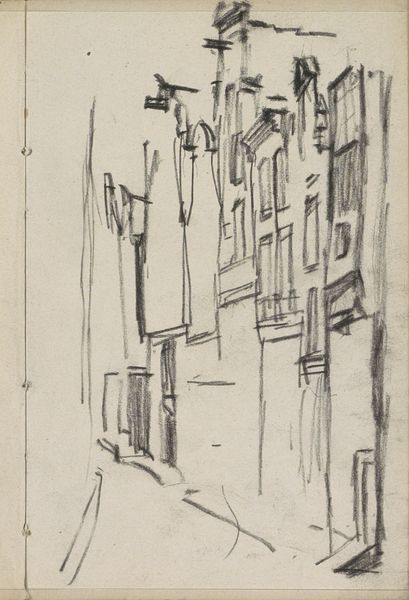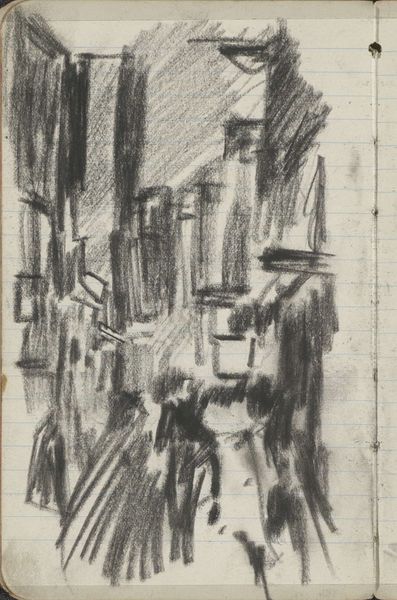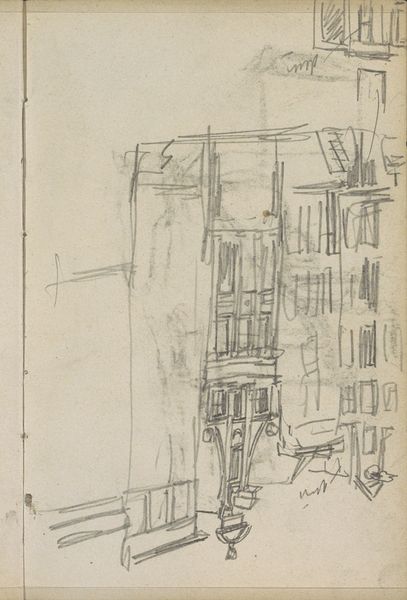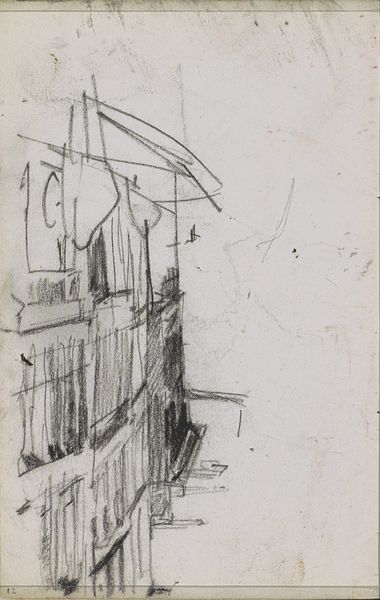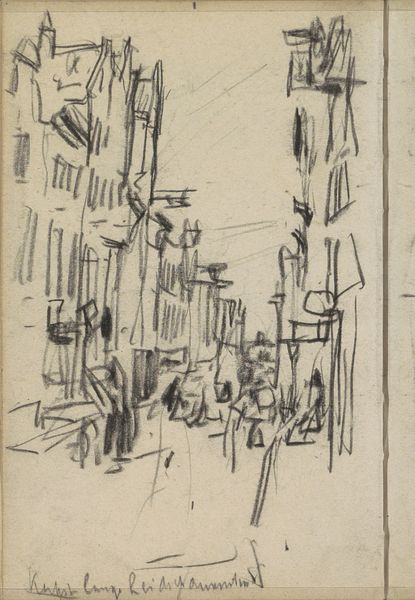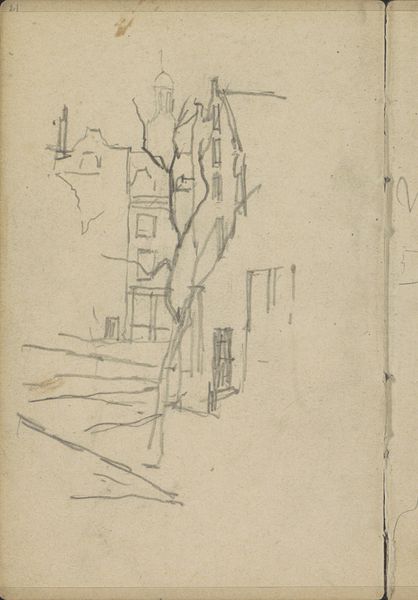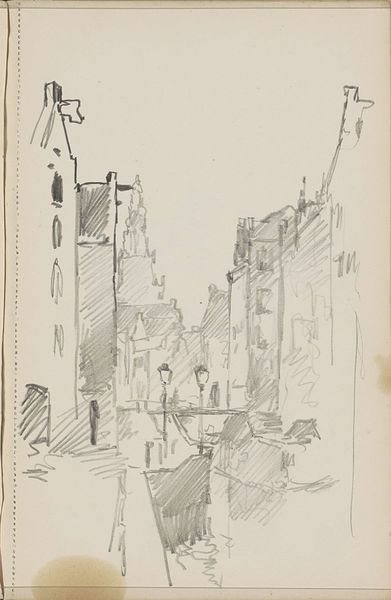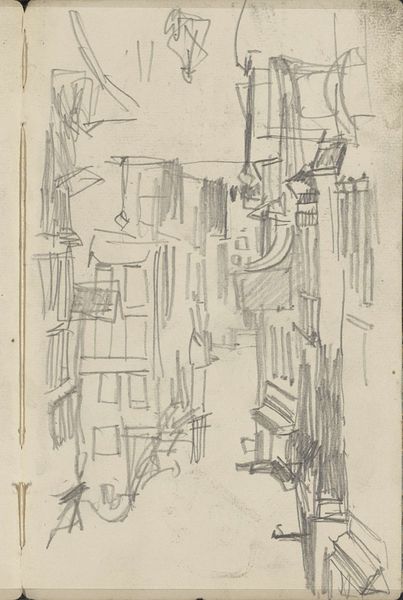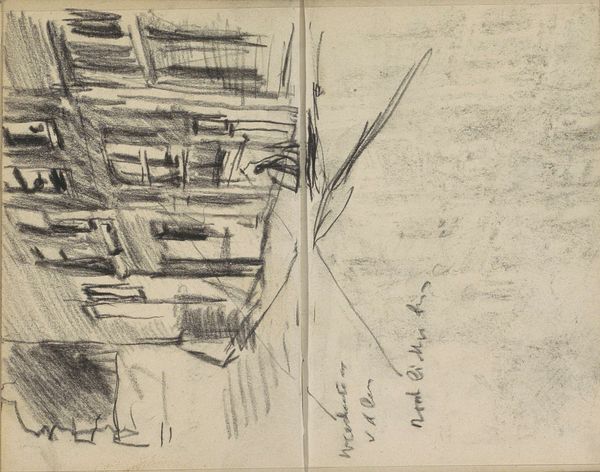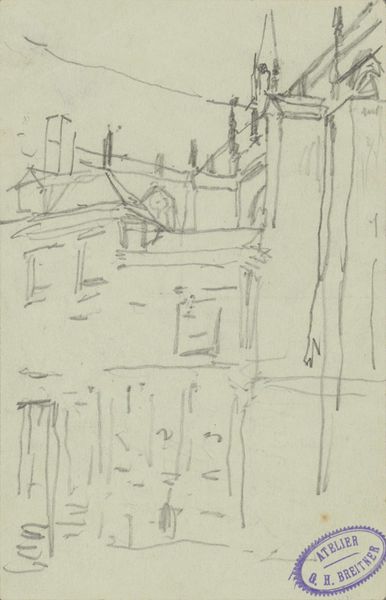
Copyright: Rijks Museum: Open Domain
Curator: Looking at this graphite drawing, Figuren in een straat of steeg te Amsterdam—Figures in a Street or Alley in Amsterdam—we glimpse into the world seen through the eyes of George Hendrik Breitner. Created sometime between 1886 and 1923. Editor: My first thought? A chaotic sort of beauty. It’s scratchy, hurried almost. You get this sense of urban bustle but rendered in this very personal, almost abstract way. It's like the energy of the city distilled onto the page. Curator: Absolutely. Breitner, famously, was really drawn to capturing the transient moments of city life. He wanted to depict the reality he observed without romanticizing it, showing both the beautiful and, let’s say, the gritty sides. Editor: This really does give off sketchbook vibes. The quick, almost frantic lines suggest someone trying to capture a fleeting scene, maybe before it disappears entirely. What do you make of that rooftop sketched in the top left? It's sort of smudged in but looks as if someone drew across an existing sketch already there. Curator: Breitner worked across a diverse mix of media: painting, photography, and drawings, such as the one you're asking about here. Each fed into the other, and this definitely does offer an unguarded view. There is almost the suggestion of an alternative aesthetic as if this may have been considered just a preliminary sketch from an artist otherwise known for realist images. I find that freedom in capturing the human element amidst a quickly modernising city makes these kinds of intimate moments stand out from his better known images. Editor: I agree, especially given Amsterdam’s rapid industrialisation and urbanization around this time. A work like this feels…significant. You can sense this shift, this feeling of precarity. Art like this served to hold the powerful accountable, forcing us to confront the effects of our ambitions. Breitner's dedication to capturing fleeting moments feels inherently radical; it challenges the conventions of who is seen, of what has value. This invites critical questioning about social change, power dynamics, and the evolving identity of the individual within these landscapes. Curator: Yes, definitely—thank you, that puts things in perspective. It’s easy to get lost in the sheer artistry and forget that art is always produced in a very real social context. Looking at this image from the Rijksmuseum, now, I find myself filled with even greater appreciation and respect for Breitner's skill. Editor: For me too! I think this work embodies resistance to erasure, reminding us of the importance of perspective, both artistically and sociopolitically. It's a celebration of unsung experiences.
Comments
No comments
Be the first to comment and join the conversation on the ultimate creative platform.
